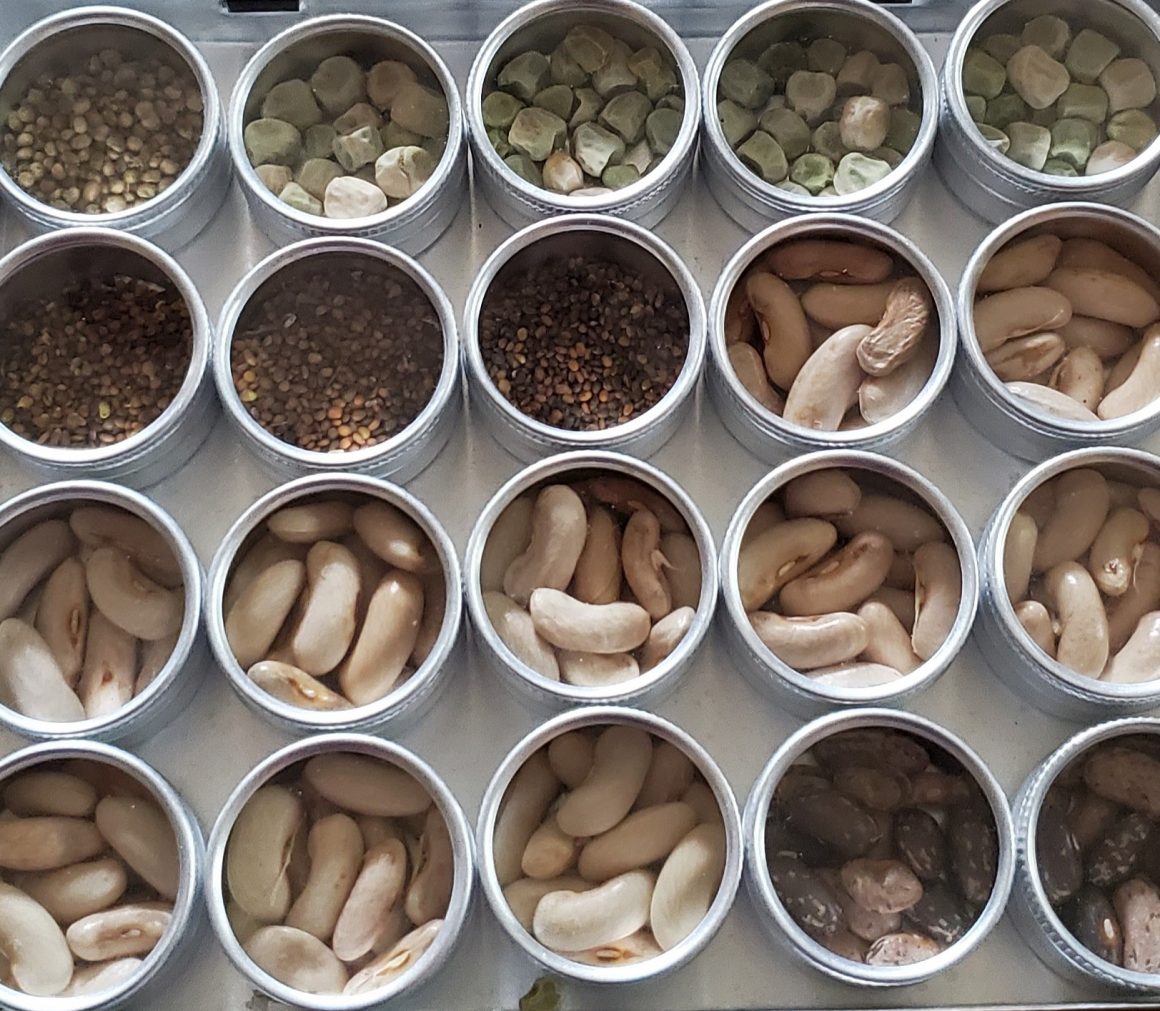Seed saving involves selecting suitable plants from which to save seed, harvesting seeds at the right time, storing them properly over the winter, and planting them at the appropriate time during the growing season.
I saved seeds from the vegetables I grew in my yard (0.17 acres) this year, including radish, spinach, bean, peas, marigolds, and echinacea. I am astounded and grateful at how this action makes me feel more resilient. My personal gardening journey has evolved over time, from container planting in the early 1990’s to companioning planting, fruit guilds, sheet mulching, and cover crops, to taking the 100-hour permaculture design course in the 2019, and now to seed saving.
Plants keep people alive. According to Seed Savers Exchange, in the last century, the world has lost 75% of its edible plant varieties, which is a big deal since we rely on plant materials for food as well as clothing, shelter, and medicine. We also admire and cherish beautiful places because of the plants that grow there, such as the mountains, savannah, swamp, and desert.
There are so many benefits of seed saving including food security, preserving heirloom varieties, encouraging genetic diversity, restoring agricultural biodiversity, and saving money.
Seed saving is the historical agricultural and gardening practice of collecting the seeds or other reproductive material from plants such as veggies, herbs, nuts, berries, and flowers to reseed or plant again. This is how traditional farmers across the globe have practiced and maintained farms for over 10,000 years. Seed saving is crucial in order for crops to succeed every year. However, with the rise of modern agricultural practices, genetic crop diversity has declined and so has seed saving. Now, commercial seed suppliers provide seeds to growers and fewer farmers save seeds. In fact, most of today’s seed-saving activity is done by home gardeners. Some ask, is it illegal for farmers to save seeds? In some cases, yes. Seed saving practices have become illegal for plant varieties that are patented or otherwise owned by some entity. As recent as 2019, four seed companies control more than 60 percent of the global seed market.
Deep inside a mountain on a remote island, halfway between Norway and the North Pole, lies the Global Seed Vault – a long-term seed storage facility, built to stand the test of time. The Global Seed Vault represents the world’s largest collection of crop diversity holding more than one million samples of seeds, originating from almost every country in the world. Seeds include unique varieties of major African and Asian food staples such as maize, rice, wheat, cowpea, and sorghum to European and South American varieties of eggplant, lettuce, barley, and potato.
According to Wikipedia, seed sovereignty is the right “to breed and exchange diverse open-sourced seeds” and focuses on the rights of individuals to be able to save seeds and be independent from major seed companies.
Seed sovereignty is closely connected to the food sovereignty and food justice movements. To save seeds is to preserve food culture. Plants as food determine the cuisine of a region. Heirloom crops wouldn’t exist if it weren’t for the gardeners who meticulously grew and saved seeds including the Brandywine tomato, Purple Top White Globe turnip, and many other varieties, passing them on to future generations. Indigenous groups have also used seed saving as a way to preserve their cultures—as well as important crops like Cherokee White Eagle Corn, the Trail of Tears Bean, and Candy Roaster Squash for future generations.
Seed saving is not a new concept and at the same time is a revolutionary act. You can start or continue to save vegetable seeds from your garden produce to plant next year.
Joan D. Plisko

